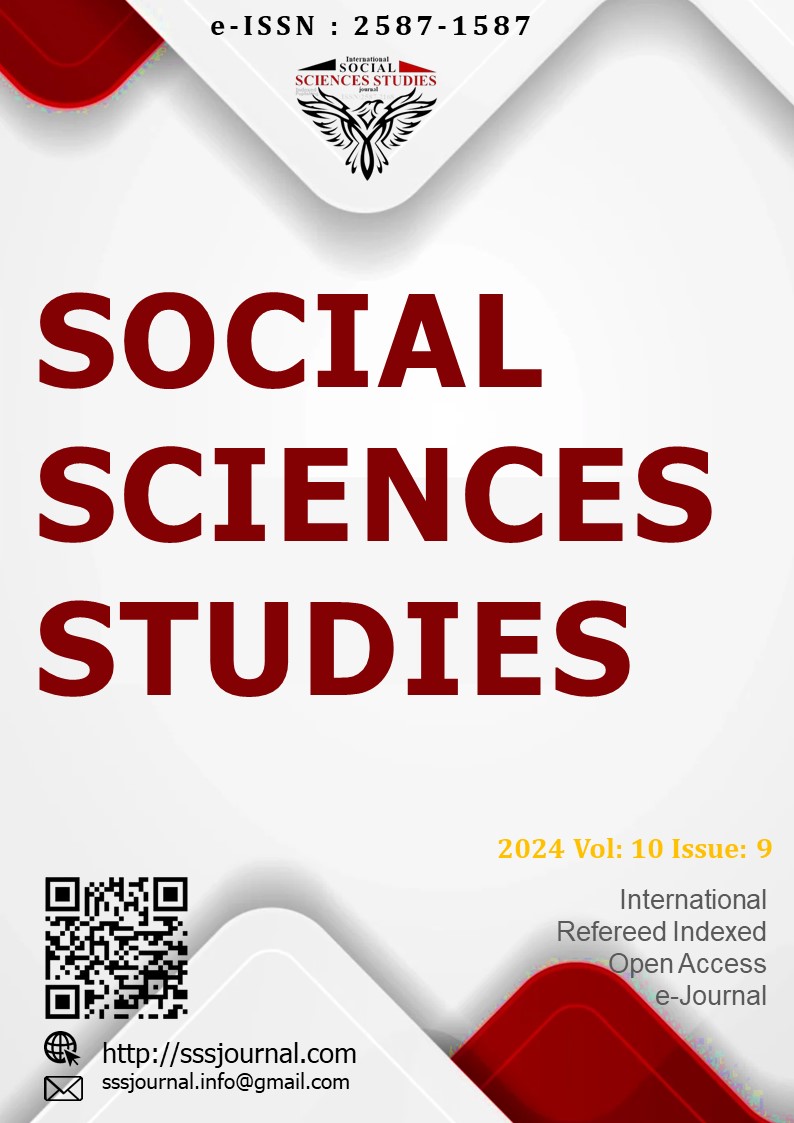Author :
Abstract
Resim sanatı kompozisyonları içerisinde çok sayıda farklı nesne yer alabilmektedir. Bunlardan biri de seramik ürünlerdir. Araştırmanın amacı, resim sanatı içerisinde yer alan seramik ürünlerin işlevlerinin belirlenmesidir. Nitel Araştırma yöntemlerinden Durum Çalışması modeli ile şekillendirilen araştırmanın kapsamı, nesnel gerçeklik algısı ve art arda yaşanmış olmasından dolayı Rönesans Dönemi, Maniyerizm Akımı, Barok Dönemi ve Rokoko Üslubu resimleriyle, seramik ürünler ise testi, kap ve vazo örnekleriyle sınırlandırılmıştır. İlgili amaç ve kapsam sınırlılıkları çerçevesinde çok sayıda resim incelenmiş ve araştırmanın sonucu olarak altı farklı başlıkta işlev örneği belirlenerek ortaya konmuştur. Bu işlevler; Durum/Olay Belirleme, Kimlik Belirleme, Sahne/Mekân Tasarımı, Görev/Statü Belirleme, Temsil Ve Yardımcı Eleman/Öğe Olma işlevleridir. Bu işlev başlıkları altında yer alan tüm resimlerin sunulmasının güçlüğünden dolayı her bir işlev için örnek bir resim seçilmiştir. Bunlar; Durum/Olay Belirleme işlevi için Velazquez’in “Dionysos’un Zaferi (Sarhoşlar)”, Kimlik Belirleme işlevi için Clerck’in “Midas’ın Cezalandırılması”, Sahne/Mekân Tasarımı işlevi için Bruegel’in “Köy Düğünü”, Görev/Statü Belirleme işlevi için Vermeer’in “Süt Döken Kadın”, Temsil işlevi için Chardin’in “Sanatlara Bir Atıf ve Ödüllendirilmeleri” ile Yardımcı Eleman/Öğe Olma işlevi için Cleve’in “Meryem’e Müjde” resimleridir. Bu resimler, içinde yer alan seramik ürünlerin işleviyle birlikte vurgulanarak açıklanmıştır. Sonuç olarak ortaya konan altı farklı başlıktaki seramik ürün işlevlerinin her birinin, resim sanatı kompozisyonları içerisinde önemli bir yer tuttuğu kanısına varılmıştır. Araştırma resim ve seramik sanatlarına sağlayacağı katkıdan dolayı önemli görülmektedir.
Keywords
Abstract
There can be many different objects in the compositions of painting. One of these is ceramic products. The aim of the research is to determine the functions of ceramic products in painting. The scope of the research, which was shaped by the Case Study model, one of the qualitative research methods, is limited to the paintings of the Renaissance Period, Mannerism Movement, Baroque Period and Rococo Style due to the perception of objective reality and the fact that it was experienced one after another, and ceramic products are limited to the examples of jugs, containers and vases. Within the framework of the relevant purpose and scope limitations, a large number of paintings were examined and as a result of the research, six different function examples were determined and presented. These functions are; situation/event determination, identity determination, stage/space design, task/status determination, representation and auxiliary element/element functions. Due to the difficulty of presenting all the paintings under the relevant function titles, an example painting was selected for each function. These are; Velazquez's "Triumph of Dionysus (Drunks)" for the situation/event determination function, Clerck's "Punishment of Midas" for the identification function, Bruegel's "Village Wedding" for the stage/space design function, Vermeer's "Woman Spilling Milk" for the task/status determination function, Chardin's "A Reference to the Arts and Their Rewards" for the representation function and Cleve's "Annunciation to the Virgin" for the auxiliary element/element function. These pictures are explained by emphasizing the function of the ceramic products in them. As a result, it is concluded that each of the six different titles of ceramic product functions has an important place in the compositions of painting art. The research is considered important due to its contribution to painting and ceramic arts.





